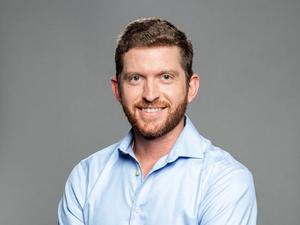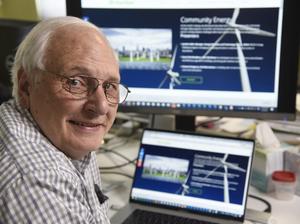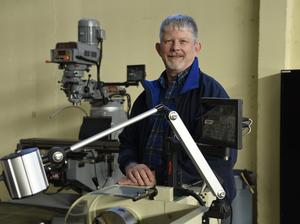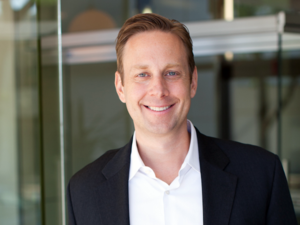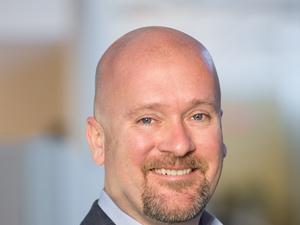A trio of Sacramento-based clean technology companies are catalysts for what will be many billions of dollars of investments worldwide toward a lower-carbon future.
These relatively small, locally based companies are reaching out to other states and countries with clean technology or climate change technology involving major investments on the ground on an industrial scale.
It’s quite a turnaround. Usually, big corporations from out of the area make big investments here. With the green technology companies, local startups are making big investments possible in other states and countries.
The companies and their technologies are diverse, but they all share the goal of reducing carbon for activities and products that are used every day all over the world.
West Sacramento chemical and green technology company Origin Materials Inc. makes zero-carbon PET plastic out of renewable plant materials, rather than petroleum. PET is the plastic most used in everything from bottles and packaging to textiles and tires.
Davis-based Sierra Energy uses blast-furnace technology to turn waste and landfill materials into synthetic fuel.
And Sacramento-based Infinium uses excess renewable electricity to make hydrogen, which it combines with industrial waste carbon to make zero-carbon transportation fuel for trucks, planes and ships.
Increasing demand for zero-carbon plastics
The furthest along is Origin Materials.
Origin (Nasdaq: ORGN) is months from completing its first manufacturing plant in Canada, which will be about a $130 million investment. Its second plant, which will be in Louisiana, will be a $1 billion investment, and a third plant will also be a $1 billion effort, said co-CEO John Bissell.
He anticipates all following plants will be on the larger scale in the $1 billion range to meet demand.
“We are the first in the world with commercial scale zero-carbon PET. People from all over the world want it,” he said.
Origin already has capacity reservations from companies for more than $8 billion of its product.
Origin's product is a drop-in replacement for petroleum in the manufacture of PET plastic, which is the most recycled plastic on the planet.
Origin has backing from Mitsubishi Group, Nestle SA, Danone SA and PepsiCo Inc., all of which are potential customers for Origin’s zero-carbon PET for industrial goods and packaging.
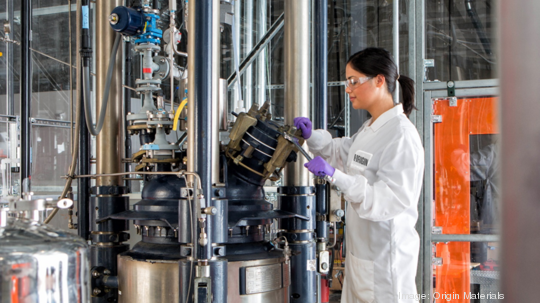
The global chemical industry is massive, and it has taken decades for other new technologies to catch up to demand, Bissell said.
Looking at at oil refineries, plastic plants and other chemical commodities, “they have billions of dollars of steel in the ground,” and it has taken generations to develop that infrastructure.
“We will be building plants for many years,” he said.
“We’re going to be building plants as fast as we can get the financing for them for the foreseeable future,” Bissell said. “We will be doing this for the rest of our careers.”
To get the product into the market faster, Origin could end up doing licensing deals with other manufacturers, likely refineries, but for the time being, it plans to develop the plants on its own.
Building its own plants has advantages for the company, Bissell said. “When you build your own plant, you learn a lot more about what it takes to do it, and you learn it faster.”
Eventually, to meet demand, licensing its technology might make sense, he added.
“We have ongoing conversations” about licensing, Bissell said. “We absolutely get inquiries about licensing all the time.”
To finance construction of its plants, Origin looks for local and state economic incentives, but project financing for each plant is an individual effort with a different mix of monies, most of it likely to come from green bonds, low-carbon bonds and other specific routes to access the bond market.
Investing in green technology
Green bonds, or bonds issued to finance projects with environmental benefits, are currently a hot item with investors, Bissell said.
BlackRock Inc. CEO Larry Fink, in public pronouncements over the past several years, has said that public companies need to consider climate change risks and benefits in all of their business planning considerations. New York-based BlackRock is the largest asset manager in the world with $10 trillion in assets under management at the end of 2021.
This year, Fink said that companies that do not make plans for a carbon-free future risk being left behind.
“When Larry Fink said that, it was the clarion call in the building of interest” in zero-carbon and green technologies, Bissell said. “It is now top of mind for companies all over the world.”
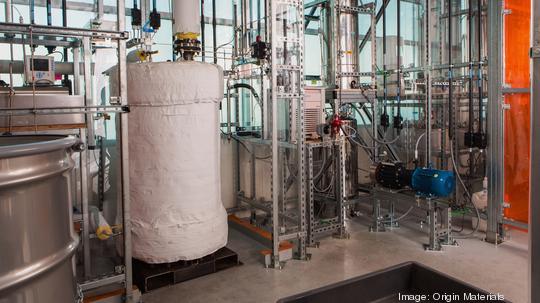
In his publicly posted "Dear CEO" letter to corporate executives in January, Fink forecast that the amount of investment into decarbonization will accelerate.
“The next 1,000 unicorns won’t be search engines or social media companies, they’ll be sustainable, scalable innovators — startups that help the world decarbonize and make the energy transition affordable for all consumers,” the letter stated.
He added that “the tectonic shift towards sustainable investing is still accelerating.”
He then asked CEOs what they are doing toward a net-zero carbon transition.
In addition to investment interest, Congress last week passed the Inflation Reduction Act, a $369 billion climate and tax package aimed at renewable fuels and carbon reduction, among other goals.
The green bond market reached $13.1 billion issued in 2013. Issuance tripled to $39.3 billion in 2014 and issuance accelerated nearly every year to reach $269.5 billion at the end of 2020. Last year, green bond issuance reached $509 billion, according to research by the London-based Climate Bonds Initiative. To be considered “green,” bonds must be verified to a standard of transparency and due diligence.
“The universe of investors has grown quite substantially,” said Infinium CEO Robert Schuetzle.
Infinium has development partnerships to build its electrofuels plants in France, Japan and Texas. Each of those plants is estimated to cost $550 million.
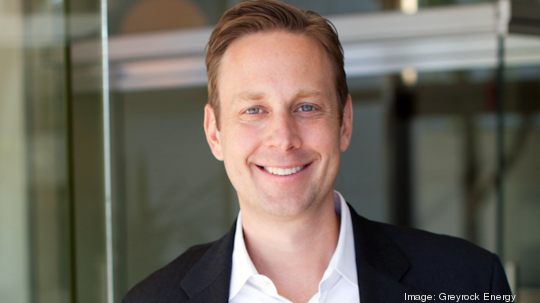
The majority of interest in Infinium’s technology is not driven by regulation but by good corporate citizenship and environmental stewardship, Schuetzle said.
“There appears to be a universal willingness to do something with CO2 other than emit it to the atmosphere,” he said.
Infinium developed proprietary technology to convert waste carbon with renewably sourced hydrogen to create ultralow-carbon transportation fuel.
The fuel made in the process is cleaner than petroleum-derived diesel and it is a drop-in replacement for fuel in existing trucks, ships and jet planes.
International efforts
The first plant Infinium announced is to be built in Dunkirk, France, in partnership with Engie SA, a French multinational utility company, and an ArcelorMittal S.A. steel production plant in Northern France. The plant will use the utility’s renewables and the steel plant’s waste carbon emissions.
Location is key for Infinium. It needs to be in proximity to excess renewable electricity and sources of carbon, Schuetzle said.
In Japan, Infinium is partnered with Mitsubishi Heavy Industries Ltd. to build electrofuel plants there. And in Texas it's working with energy company Denbury Inc. to develop low-carbon fuel projects.
Infinium will structure its deals as individual investments funded by equity and debt from investors.
The interest in new fuel production in Europe has accelerated this year because of the war in Ukraine and the subsequent sanctions levied on Russian fuel exports, Schuetzle said. The company announced its Dunkirk facility in February, weeks before Russia invaded Ukraine.
The consequences of geopolitical instability of supply chains and of the war are new links between energy security and clean technology that weren’t there before, Schuetzle said. That link has made the market for clean technology even more attractive to investors.
Infinium anticipates plant construction financing through combinations of debt and equity, and each plant will operate as separate corporations. Infinium will build teams to operate the plants on the ground.
Infinium got some of its initial investment from Amazon and Mitsubishi Heavy Industries Ltd., among others. Companies like those that invested in Infinium are under increasing pressure from their own investors and regulators to address climate change.
Davis-based Sierra Energy raised $33 million in 2019, and it was out looking for more money this year to develop a large-scale demonstration site of its FastOx gasification technology, which converts garbage into clean energy.
But instead of getting investors, it got letters of intent to build its plants in Africa, Europe and Australia.
“What that means is we don’t need to raise the money,” said CEO Mike Hart.
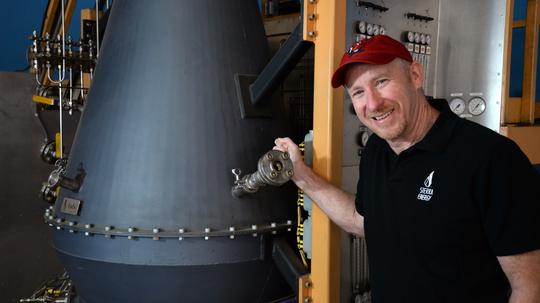
In addition to letters of intent to build systems in South Africa, Australia and Eastern Europe, Hart went to New Zealand earlier this month to meet with officials there who want to build out the technology to lower their carbon footprints.
Sierra Energy developed a process based on steel blast-furnace technology that reduces common municipal garbage into metals, inorganic slag and gases, including hydrogen. Hydrogen can be used to make synthetic fuels. The slag can be used as roadbed. The FastOx process cuts the waste stream going into landfills, and in the process, it keeps landfills from producing more methane, a potent greenhouse gas.
Not only can Sierra Energy’s FastOx gasifier make energy out of new waste to the landfill, it can be operated to use the landfill as an energy source.
The company has been demonstrating its technology at U.S. Army Base Fort Hunter Liggett in Monterey County for nearly four years. That project can process 10 to 20 tons of waste per day. Most customers want systems five or 10 times that size.
The interest the company is getting now is for vessels that can process 100-ton-per-day amounts, and some of the interested parties want two vessels at each site, Hart said.
He estimates it will cost under $100 million for each 100-ton system at first, and the price should come down as Sierra Energy gets more experience in developing the sites.
The systems create fuel, and they can also reduce greenhouse gases by processing debris from historic landfills.
But they won’t be doing that in California.
High costs, some intricate state policies and difficulty in getting manufacturing approvals make developing any of the plants unlikely in California, all three executives said.
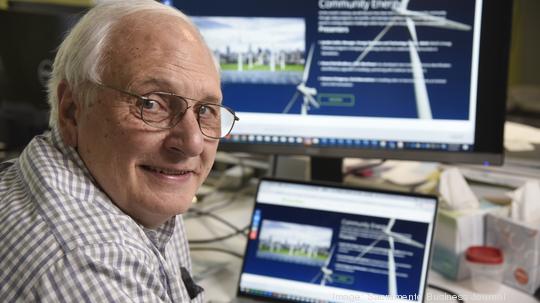
“It’s not unusual. It’s the same phenomenon we’ve seen for years. I think it’s unfortunate,” said Gary Simon, chairman of CleanStart, a local nonprofit that supports clean technology startups and entrepreneurs. “It’s the same reasons Intel doesn’t build chip plants in California."
“California will discover the science eventually. It’s a pity,” said Sierra Energy CEO Hart. “We would love to do a project in California, but a few policy mandates are in the way of progress.”
California could be a world leader in green technology manufacturing but for the obstacles of high costs and strict policies.
Hart said that some of the policy goals that prevent his technology from being implemented in California are at odds with some of California’s carbon reduction goals.
For example, researchers at NASA’s Jet Propulsion Laboratory with the support of the California Air Resources Board and the California Energy Commission concluded a two-year study of methane emissions in California using special sensors at the end of 2019. The research found that of 270 landfills surveyed, 30 of them were emitting enormous plumes of methane. Those 30, in fact, were responsible for 40% of point source emissions during the survey.
“What Origin Materials is doing, that is an earth-shattering technology,” Hart said, adding that he’s not surprised that the California-based company isn’t proposing any of its initial plants in California.
Bissell has said that costs in California are prohibitive, and Origin needs to be close to a ready supply of wood products and transportation by rail or barge. California has vast forests, but what logging facilities still exist tend to be remote.
“The technology is here, and the money is here. We could be the world leader,” Hart said.
While California won’t be getting the plants, Simon said that the intellectual jobs and the engineering jobs are in Sacramento, and that is a win for the area.
